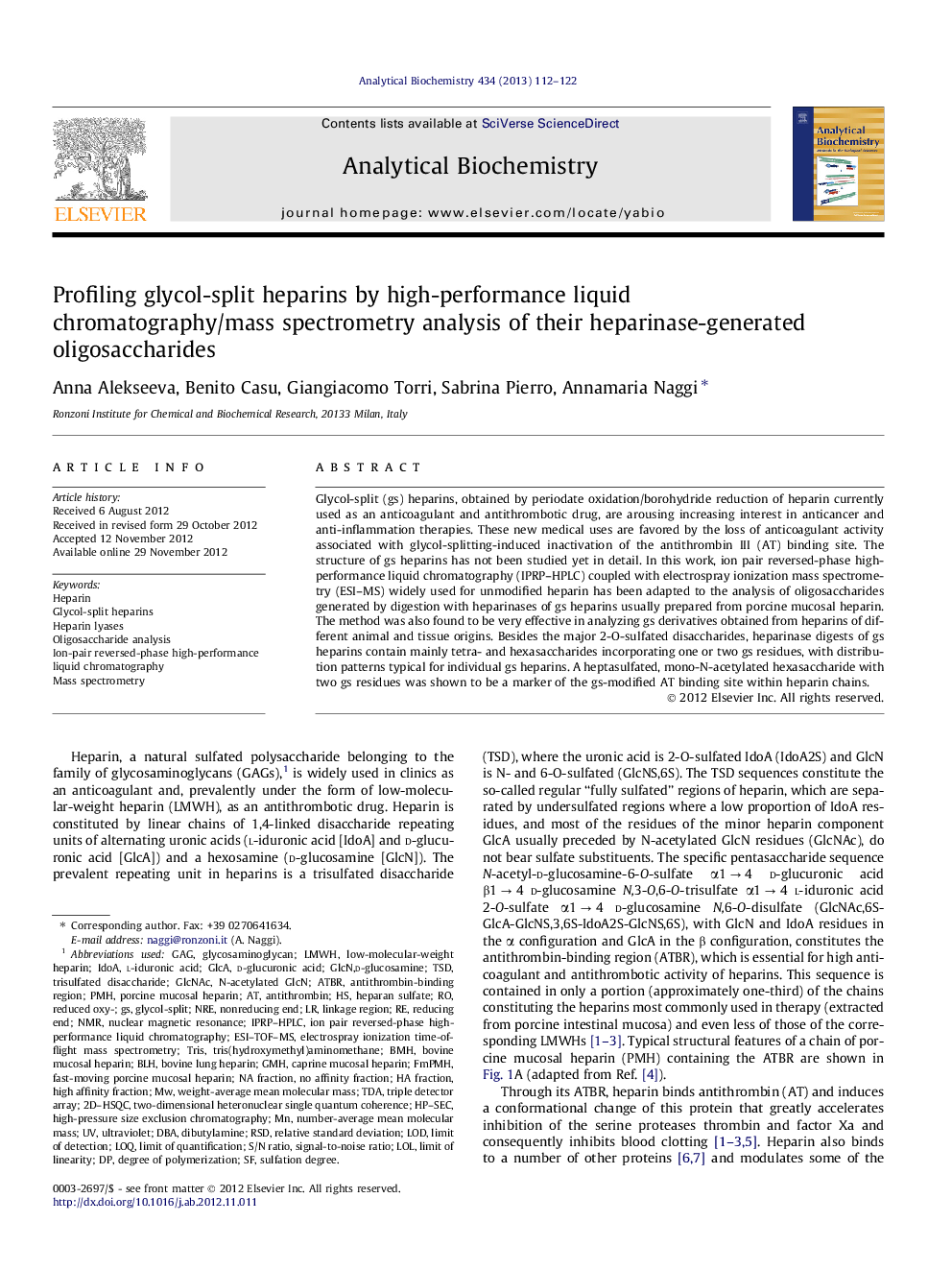| کد مقاله | کد نشریه | سال انتشار | مقاله انگلیسی | نسخه تمام متن |
|---|---|---|---|---|
| 10532588 | 961630 | 2013 | 11 صفحه PDF | دانلود رایگان |
عنوان انگلیسی مقاله ISI
Profiling glycol-split heparins by high-performance liquid chromatography/mass spectrometry analysis of their heparinase-generated oligosaccharides
ترجمه فارسی عنوان
تجزیه و تحلیل هپارین های گلیکول اسپلیت با استفاده از روش کروماتوگرافی مایع / اسپکترومتری جرمی از الیگوساکارید های تولید شده توسط هپاریناز
دانلود مقاله + سفارش ترجمه
دانلود مقاله ISI انگلیسی
رایگان برای ایرانیان
موضوعات مرتبط
مهندسی و علوم پایه
شیمی
شیمی آنالیزی یا شیمی تجزیه
چکیده انگلیسی
Glycol-split (gs) heparins, obtained by periodate oxidation/borohydride reduction of heparin currently used as an anticoagulant and antithrombotic drug, are arousing increasing interest in anticancer and anti-inflammation therapies. These new medical uses are favored by the loss of anticoagulant activity associated with glycol-splitting-induced inactivation of the antithrombin III (AT) binding site. The structure of gs heparins has not been studied yet in detail. In this work, ion pair reversed-phase high-performance liquid chromatography (IPRP-HPLC) coupled with electrospray ionization mass spectrometry (ESI-MS) widely used for unmodified heparin has been adapted to the analysis of oligosaccharides generated by digestion with heparinases of gs heparins usually prepared from porcine mucosal heparin. The method was also found to be very effective in analyzing gs derivatives obtained from heparins of different animal and tissue origins. Besides the major 2-O-sulfated disaccharides, heparinase digests of gs heparins contain mainly tetra- and hexasaccharides incorporating one or two gs residues, with distribution patterns typical for individual gs heparins. A heptasulfated, mono-N-acetylated hexasaccharide with two gs residues was shown to be a marker of the gs-modified AT binding site within heparin chains.
ناشر
Database: Elsevier - ScienceDirect (ساینس دایرکت)
Journal: Analytical Biochemistry - Volume 434, Issue 1, 1 March 2013, Pages 112-122
Journal: Analytical Biochemistry - Volume 434, Issue 1, 1 March 2013, Pages 112-122
نویسندگان
Anna Alekseeva, Benito Casu, Giangiacomo Torri, Sabrina Pierro, Annamaria Naggi,
